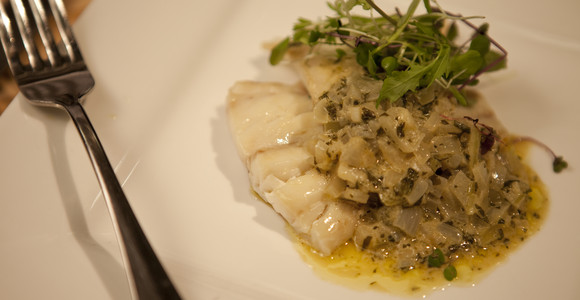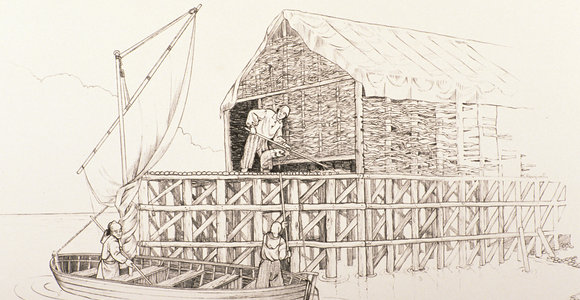Parks Canada Heritage Gourmet Recipes
Fresh Cod Broiled with Ragoust
Even though this recipe has 17th century origins, today’s fish lovers would most assuredly enjoy this dish!

Origin: Castle Hill National Historic Site
Region: Atlantic (Newfoundland and Labrador)
Period: Pre-18th Century
Course: Main Course
 Pen and ink drawing of fish stage and boat arriving with cod
Pen and ink drawing of fish stage and boat arriving with cod © Parks Canada / Karen Recjuk
The main ingredient of this recipe - cod - is the reason why the fishing colony of Plaisance was established and ultimately why Castle Hill National Historic site was established. At the time of the original publication date for this French recipe (1654), French fishermen frequented the rich fishing grounds along the south coast of Newfoundland (known at that time as Terre Neuve) and used the Great Beach as a place to dry cod fish. Castle Hill was occupied by the French military to protect the colony, and the amount of cod processed and shipped to France in the 17th and 18th centuries suggest that meals similar to this were prepared in the region during the French occupation.
Fresh Cod Broiled with Ragoust
Ingredients:
- 1 lb | 500 g cod filet
- Cloves to stick into the fish
- 1 large onion
- 2 - 4 tbsp | 30-60 ml butter or olive oil
- 2 tbsp | 30 ml of fresh parsley or one of dried
- 2 tsp | 10 ml red wine vinegar
- ¼ cup | 60 ml broth, chicken or vegetable
- 1 tbsp | 15 ml Dijon mustard
- 1 tbsp | 15 ml minced capers (optional)
Directions:
- Salt the cod filet to taste and stud it with cloves. Lay it on a flat pan and grill at 400°F (200°C) for 5 to 10 minutes depending on the thickness of the fish.
- Melt some of the butter in a frying pan; add the parsley and onion and fry until onions are soft. Add the wine vinegar, the broth and the Dijon to the pan and simmer for a few minutes. Use this as a sauce for the fish. Garnish it with the capers (optional).
Credits:
Recipe tested by Chef Sean Edwards, Algonquin College School of Hospitality and Tourism
This recipe is adapted from a recipe in the book Le cuisinier françois by La Varenne, which dates to 1654.
Related links
- Date modified :